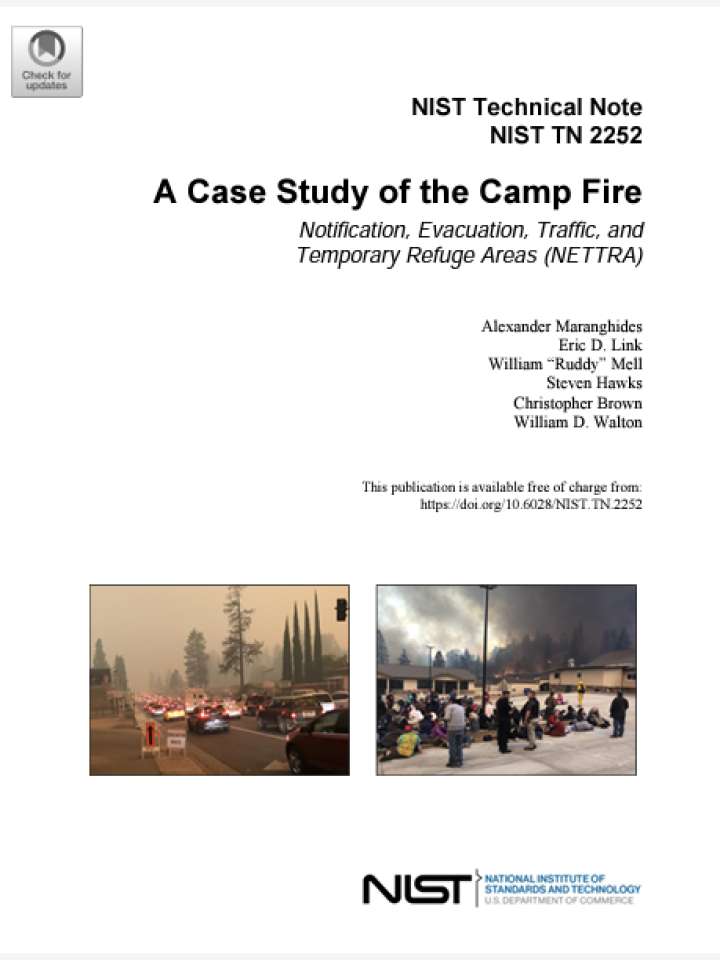A case study of the camp fire - notification, evacuation, traffic, and temporary refuge areas (NETTRA)
This report focuses on the life safety components of Notification, Evacuation, Traffic, and Temporary Refuge Areas (NETTRA). The 2018 Camp Fire in Butte County, California quickly impacted the communities of Concow, Paradise, and Magalia, triggering widespread evacuation of 40000 people. The fire became the most deadly and destructive fire in California history, resulting in 85 fatalities and more than 18000 destroyed structures.
These are some of technical findings derived from the analysis and interpretation of the data in this report:
- An evacuation plan, developed with input from previous fires and from training exercises, was in place and communicated to first responders and the community before the incident.
- The evacuation plan included coordination among multiple regional first responder agencies (fire departments, law enforcement, and public works).
- The Paradise evacuation plan was conceived and designed for a zoned/partial evacuation; it was not designed for a complete simultaneous evacuation of the town.
- There is a need for streamlined decision-making and communication processes where all the emergency management participants are trained and proficient using the same evacuation zone layout and nomenclature.
- Including an evacuation component in the 2016 WUI fire training exercise built “muscle memory” of first responders for integrating evacuation into the response component of WUI fire incidents.
- The 2016 training exercise was used to practice key evacuation elements, including traffic contraflow on Skyway. This served as direct experience to Paradise Public Works and Police Department. In planning for WUI fire evacuations, community.
Explore further
